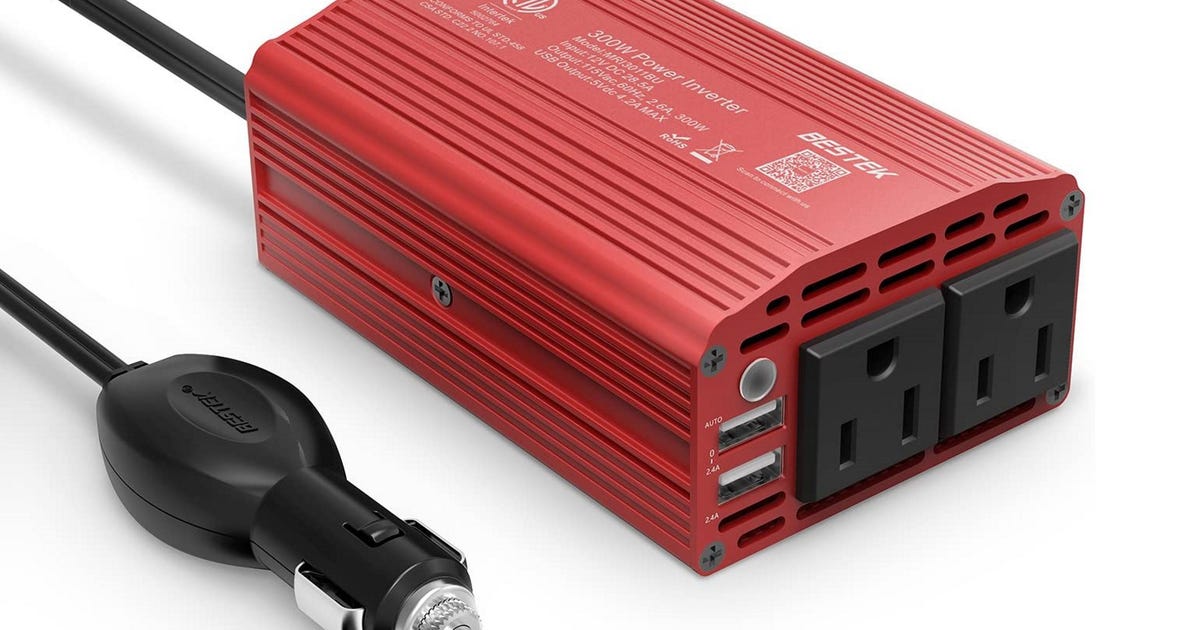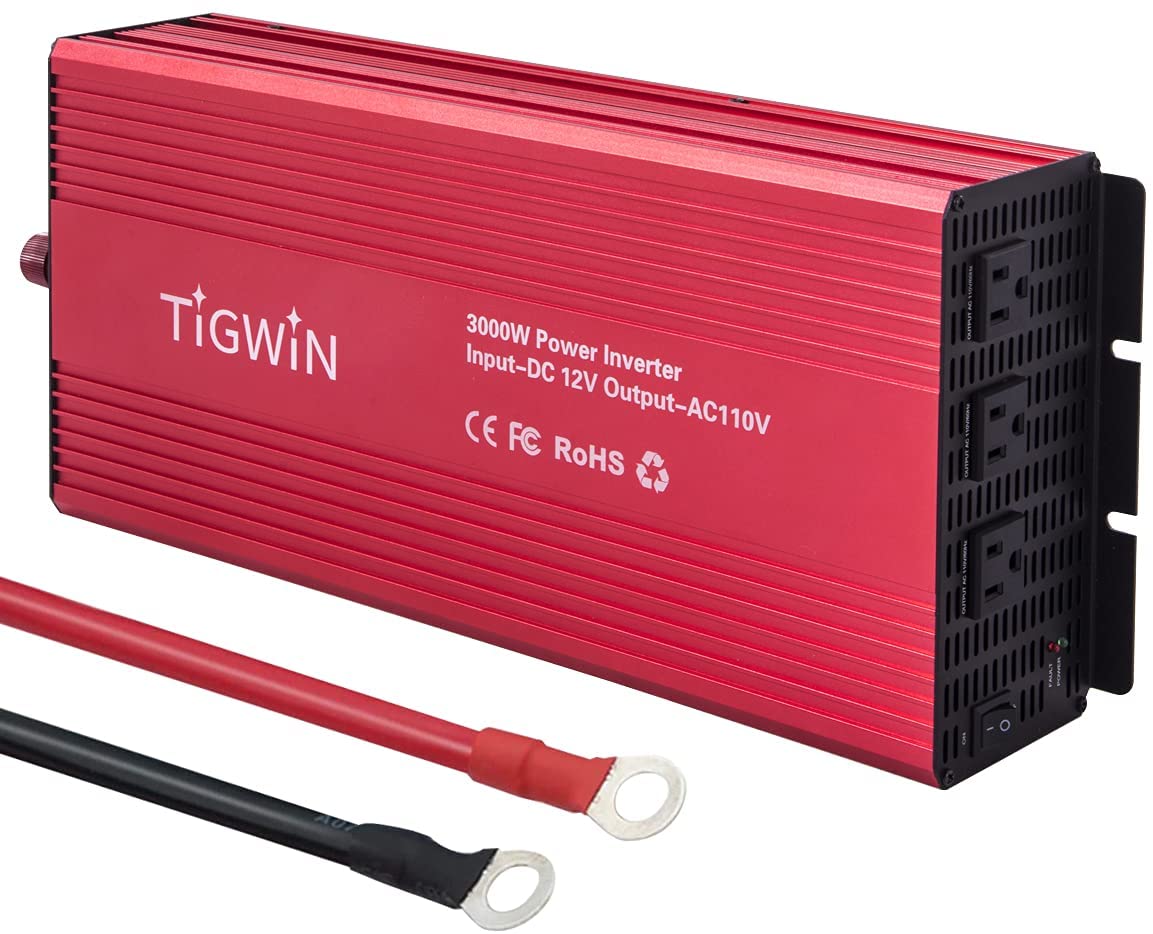Introduction
Inverters are an essential component of any off-grid or backup power system, allowing users to convert DC power stored in batteries into AC power for use with standard household appliances and electronic devices. However, it is crucial to understand the power rating of an inverter to ensure it can handle the required load and provide reliable performance. In this article, we will explore the different types of inverter power ratings, the factors that affect them, and how to choose the right power rating for your needs.
Explanation of inverter power rating

Inverter power rating refers to the amount of power an inverter can output continuously, as well as its ability to handle brief spikes in power demand. The power rating is typically expressed in watts (W) or kilowatts (kW) and represents the maximum amount of power that the inverter can supply to connected devices.
Importance of understanding inverter power rating
Understanding the power rating of an inverter is critical to ensuring that it can handle the electrical load that it will be powering. Failure to match the power rating of an inverter to the load can result in poor performance, damage to the inverter, and even electrical hazards. Additionally, selecting an inverter with too high of a power rating can result in wasted energy and increased costs.
Types of Inverter Power Ratings
There are several types of inverter power ratings that are important to understand when selecting an inverter for a particular application.
Continuous Power Rating
The continuous power rating of an inverter refers to the amount of power it can output continuously without overheating or shutting down. It is typically expressed in watts or kilowatts and is the most important rating to consider when selecting an inverter. The continuous power rating is determined by the inverter’s design and the quality of its components, such as its cooling system and power transistors.
Peak Power Rating
The peak power rating of an inverter refers to the maximum amount of power it can supply for a brief period, typically a few seconds, to handle short-term spikes in demand. This rating is particularly important for devices with motors, such as refrigerators and air conditioners, which require a higher initial power surge to start up. The peak power rating is usually higher than the continuous power rating, but it is only sustainable for a short period.
Surge Power Rating
The surge power rating of an inverter refers to the maximum amount of power it can handle for a very brief period, typically less than a second. Surge power is important for handling sudden spikes in power demand caused by lightning strikes, short circuits, or other electrical anomalies. The surge power rating is typically much higher than both the continuous and peak power ratings.
Comparison of different power ratings
When selecting an inverter, it is important to consider all three power ratings, as they each serve a different purpose. However, the most critical rating to consider is the continuous power rating, as it represents the sustained power output of the inverter. The peak and surge power ratings are important for ensuring that the inverter can handle sudden spikes in demand, but they are not as critical as the continuous power rating.
III. Factors Affecting Inverter Power Rating
Several factors can affect the power rating of an inverter, including ambient temperature, battery voltage, inverter efficiency, load type, and load size.
Ambient Temperature
The ambient temperature, or the temperature of the environment surrounding the inverter, can have a significant impact on its performance. Inverters are typically designed to operate within a specific temperature range, and exceeding this range can cause the inverter to overheat and shut down. As the temperature increases, the inverter’s power output may decrease, leading to poor performance and potential damage
to the inverter. Therefore, it is important to consider the ambient temperature when selecting an inverter and ensure that it can operate within the desired temperature range.
Battery Voltage

The voltage of the batteries connected to the inverter can also affect its power rating. In general, the higher the voltage of the batteries, the higher the power output of the inverter. However, the maximum power output of the inverter may be limited by the battery’s capacity or the wiring connecting the batteries to the inverter. Therefore, it is important to consider the battery voltage when selecting an inverter and ensure that it is compatible with the batteries and wiring in the system.
Inverter Efficiency
The efficiency of an inverter, or its ability to convert DC power into AC power, can also affect its power rating. In general, more efficient inverters can output more power than less efficient ones for a given input voltage and current. However, the efficiency of an inverter can vary depending on the load and the input voltage, so it is important to consider the efficiency rating of an inverter and how it may affect its power output under different conditions.
Load Type
The type of load connected to the inverter can also affect its power rating. Certain types of loads, such as resistive loads like light bulbs and heating elements, are easier to power than inductive loads like motors and compressors. Inductive loads require a higher initial surge of power to start up, which can put a strain on the inverter and affect its power rating. Therefore, it is important to consider the type of load when selecting an inverter and ensure that it is capable of handling the initial surge of power required by inductive loads.
Load Size
The size of the load, or the amount of power it requires, can also affect the power rating of an inverter. In general, larger loads require more power and may require a higher continuous power rating from the inverter. However, it is important to consider the type of load as well, as certain loads may require a higher peak or surge power rating to handle the initial surge of power required to start up.
Choosing the Right Inverter Power Rating
Choosing the right inverter power rating involves several steps, including determining power requirements, matching the inverter power rating to the power requirements, and deciding whether to overrate or underrate the inverter.
Determining Power Requirements
The first step in choosing the right inverter power rating is to determine the power requirements of the system. This involves calculating the total power consumption of all the devices that will be connected to the inverter and ensuring that it falls within the maximum power output of the inverter. It is important to consider the continuous, peak, and surge power requirements of the devices, as well as any inductive loads that may require a higher initial surge of power to start up.
Matching Inverter Power Rating to Power Requirements
Once the power requirements of the system have been determined, the next step is to match the inverter power rating to the power requirements. This involves selecting an inverter with a continuous power rating that is equal to or greater than the total power consumption of the devices. It is also important to ensure that the peak and surge power ratings of the inverter are sufficient to handle the initial surge of power required by inductive loads.
Overrating vs. Underrating

When selecting an inverter, it is important to consider whether to overrate or underrate it. Overrating an inverter, or selecting one with a higher power rating than necessary, can provide a margin of safety and ensure that the inverter can handle unexpected spikes in demand. However, overrating an inverter can also result in wasted energy and increased costs
due to the larger size and cost of the inverter. Underrating an inverter, or selecting one with a lower power rating than necessary, can save on costs but may result in system failure or damage if the inverter is unable to handle the power requirements of the devices.
Ultimately, the decision to overrate or underrate an inverter depends on the specific needs and requirements of the system. It is important to carefully consider the power requirements of the devices and select an inverter with a power rating that is appropriate for the system’s needs.
Conclusion
In conclusion, understanding the power rating of an inverter is essential for selecting the right inverter for a particular system. The continuous, peak, and surge power ratings of an inverter determine its ability to handle the power requirements of the devices connected to it. Additionally, several factors can affect the power rating of an inverter, including ambient temperature, battery voltage, inverter efficiency, load type, and load size.
When selecting an inverter, it is important to determine the power requirements of the system and match the inverter power rating to those requirements. Additionally, it is important to consider whether to overrate or underrate the inverter based on the specific needs and requirements of the system.
By understanding the importance of inverter power rating and taking into account the factors that can affect it, individuals can select the right inverter for their system and ensure reliable and efficient operation.
Bearing in mind the importance of choosing the right inverter, it is important to consider various recommendations when selecting the inverter. One of the most important factors to consider is the quality of the inverter. Choosing a high-quality inverter from a reputable manufacturer can ensure that it operates efficiently and reliably. Additionally, it is important to consider the warranty offered by the manufacturer to ensure that the inverter is covered in the event of failure or damage.
Furthermore, it is advisable to ensure that the inverter is compatible with the batteries and wiring in the system, and that it has the necessary safety features, such as overvoltage and overcurrent protection. Finally, it is important to consider the cost of the inverter and whether it provides the best value for the specific needs and requirements of the system.
In conclusion, selecting the right inverter power rating is crucial for ensuring reliable and efficient operation of a power system. By understanding the different types of power ratings, the factors that can affect them, and how to choose the right inverter for a specific system, individuals can make informed decisions and select an inverter that meets their needs and requirements.
See Also-
- Best Power Inverter For Truck
- Best Power Inverter
- Best Pure Sine Wave Inverter
- Best RV Inverter
- Best Solar Inverter
